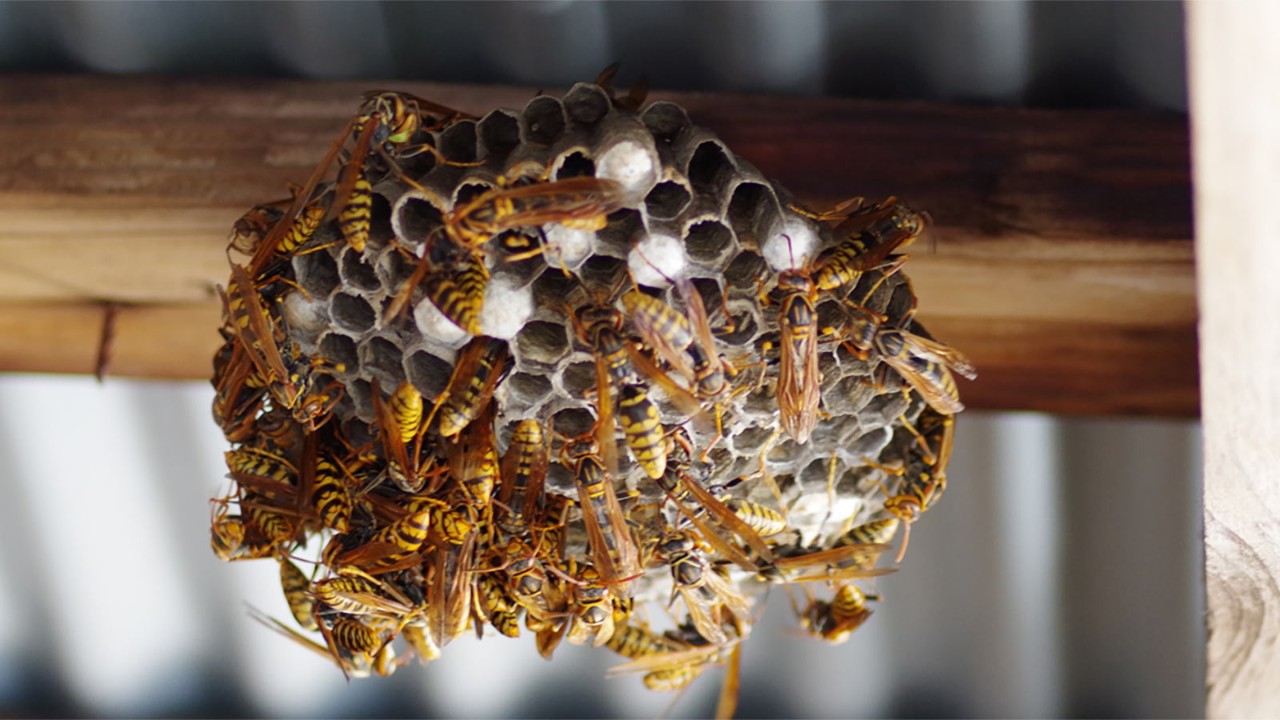A dilapidation inspection can help ensure compliance, transparency, and protection for all stages of construction.
Eco-friendly ways to deal with bees and wasps in your property

Dealing with uninvited house guests can be tricky. When they are considered pests, with habits that run the risk of threatening the safety and health of your property, taking action to deal with the problem needs to be done effectively.
When our qualified pest and building inspectors at Rapid Building Inspections find evidence of pest infestation that could harm the structural integrity of your home – or even wreak havoc with electrical wiring – our report alerts you to the problem. What comes next for you is deciding how to manage the issue.
Different pests create different potential problems, and some creatures that are pests in some people’s eyes are protected species, or helpful for the environment, so exterminating them is not the answer.
That can certainly be the case when it comes to bees and wasps. When you find out that there is a hive or nest on your property, worrying about the risks that stings can pose to personal health and safety is a genuine concern – especially if someone in the household has an allergy issue.
With some practical insights into the different types of bees and wasps that may be inhabiting your property – and the damage they have the potential to cause – you can make the best possible decisions to suit your property. That might involve figuring out ways to learnt to live with them, or, in the case of pests that can harm you and your property, arranging to have them removed safely.
Bees
Bees are usually a dull shade of yellow or golden-brown, with black stripes around their back legs and bodies. Although bee stings can be painful, most people experience bee stings that are not life-threatening or dangerous – although that is not the case for people with allergic reactions.
Regardless of how dangerous a sting may be to you or someone in your household, if you find out your home is also home to a beehive, it needs to be removed and managed properly. Removing beehives requires expertise. Look up local beekeepers in your area for help. This is an environmentally responsible way to help deal with a bee problem without using toxic pesticides. Although worker bees have a short life-span of around five weeks, a queen bee can live for three years – and that means that, if a hive is on your property, it’s there to stay for quite a while.
You can help prevent bee infestation with some careful property management. Bees usually build beehives near a water source, because they use water to regulate the temperature of the hive. Beehives are often found in the corners of your roof, where water may pool. If you have open water sources around your property, using covers on pools or spas, and ensuring outside sinks are not filled with water and your roof has proper drainage, will help reduce the risk.
Bee infestations can also be prevented with careful attention to property maintenance and cleanliness in and around the home. Ensuring garbage bins and compost bins are clean and secure, helps minimise the risks of bees calling your property home. Eco-friendly bee control can include use of non-toxic chemicals, such as peppermint oil or cryolite, which can be sprayed on areas of your property that bees may be attracted to.
Bees can also use cavities, including within walls or home insulation, to build their hives. A large hive can contain tens of thousands of bees and the weight of it, including the honey within it, can damage your walls and your insulation. Even a hive that is abandoned by bees that have been repelled by eco-friendly solutions still needs to be dealt with to prevent the damage caused by waxy honeycomb residue left behind. A wax or honey stain can leave an exterior wall looking unsightly but can also lead to other problems. Moths, flies, and ants can also be attracted to this sweet, sticky residue and use the traces bees leave behind as an open invitation to move in. Removing all remnants of a hive – even after the bees are gone – also prevents any bees from coming back there.
By remembering that bees are an essential part of any healthy, thriving eco-system, by helping pollinate plants, finding ways to deal with bee control and removal in an eco-friendly way is a positive step to keep your home and garden healthy, without compromising your property. Natural ways to help repel bees from your property and garden include planting bee-repelling plants, such as Eucalyptus, citronella, mint, pennyroyal, marigolds, and basil.
Wasps
Wasps are mainly black in colour, with yellow markings and yellow and black stripes on their back half, with black dots down each side of the abdomen. In Australia, the two main wasps in Australian backyards are the European wasp and the native paper wasp.
Wasps typically build their nests on tree branches, in bushes, or within your property’s fascias. Wasps are known for more aggressive behaviour and the power to sting repeatedly – causing incredible pain – but they also help pollinate plants and are responsible for some other environmentally friendly behaviours, including eating other unwanted garden pests, such as plant-damaging caterpillars. Wasp removal should be done in a non-toxic way – and without causing harm to other species.
If a wasp community has moved into your property, enjoying an outdoor lifestyle and entertaining friends and family can prove impossible, with wasps attracted to food and drinks at backyard barbecues and gatherings. Professional wasp removalists can assess the situation and provide you with the best possible options to remove the wasp nest and ensure wasps don’t return. These days, many pest removal solutions are non-toxic and won’t cause harm to other species.
You can help prevent wasps visiting your home by ensuring that compost areas and rubbish bins are secured and covered. Sealing any gaps in brickwork or weatherboards can help prevent wasps from creating a nest within the safe, cool, cavities of your property. Ensuring doors and windows are property sealed – preferably with insect screens attached – will also minimise the risk of wasps entering your home.
Natural ways to help repel wasps from your property and garden include planting wasp-repelling plants, such as Eucalyptus, citronella, trumpet flowers, geraniums, cloves, marigolds, thyme and basil. By growing plants like these around the perimeter of your property, where wasps are likely to look for places to enter your property to nest, you can minimise the risks of them getting into the wall space of your home.
Learning to live with pests – and prevent property damage
Although some pests need to be lived with, rather than destroyed, getting a building and pest inspection report is an essential part of your property purchase, to give you a better understanding of what might be living in your property and what steps – and spending – might be needed to rectify the issue.



